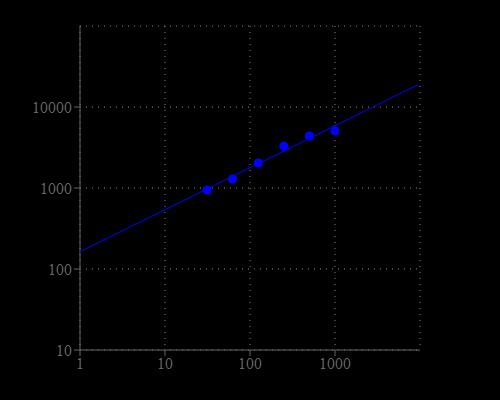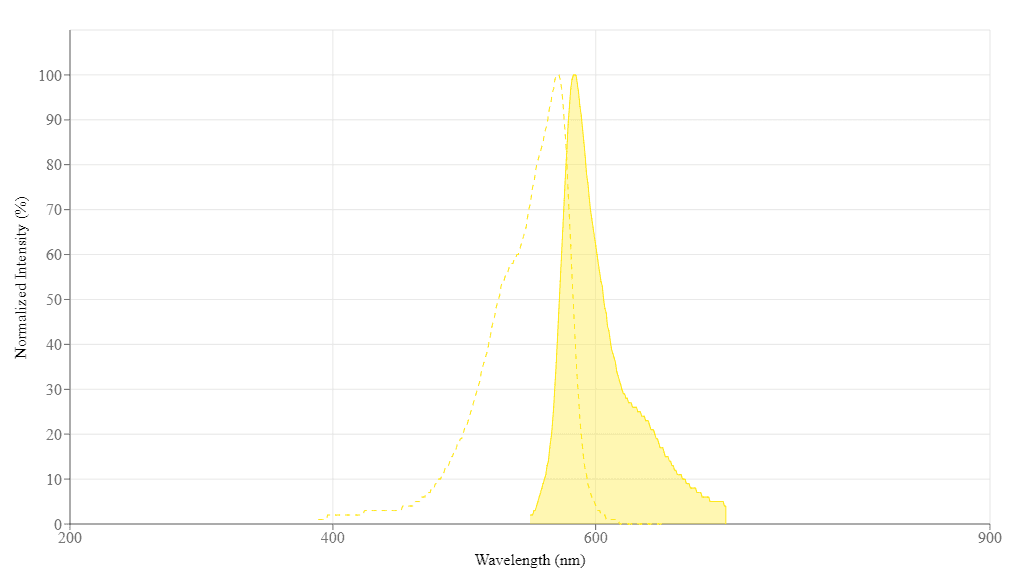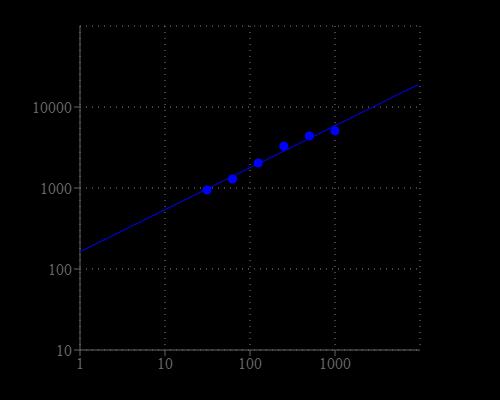Amplite® Fluorimetric Catalase Assay Kit *Red Fluorescence*
Ordering information
| Price | |
| Catalog Number | |
| Unit Size | |
| Quantity |
Additional ordering information
| Telephone | 1-800-990-8053 |
| Fax | 1-800-609-2943 |
| sales@aatbio.com | |
| International | See distributors |
| Bulk request | Inquire |
| Custom size | Inquire |
| Shipping | Standard overnight for United States, inquire for international |
Spectral properties
| Excitation (nm) | 571 |
| Emission (nm) | 584 |
Storage, safety and handling
| H-phrase | H303, H313, H333 |
| Hazard symbol | XN |
| Intended use | Research Use Only (RUO) |
| R-phrase | R20, R21, R22 |
| UNSPSC | 12171501 |
| Overview |
Excitation (nm) 571 | Emission (nm) 584 |
Catalase is a common antioxidant heme-containing redox enzyme found in nearly all living organisms that are exposed to oxygen. The enzyme is concentrated in the peroxisome subcellular organelles. Hydrogen peroxide is an ROS that is a toxic product of normal aerobic metabolism and pathogenic ROS production involving oxidase and superoxide dismutase reactions. By preventing the excessive buildup of H2O2, catalase allows important cellular processes which produce H2O2 as a by-product to take place safely. The Amplite® Fluorimetric Catalase Assay Kit provides a quick and sensitive method for the measurement of catalase activity. It can be performed in a convenient 96-well or 384-well microtiter-plate format and easily adapted to automation without a separation step. Catalase reacts with H2O2 to produce water and oxygen (O2). Amplite® Red also reacts with H2O2 to generate a red fluorescent product. Therefore the reduction in fluorescence intensity is proportional to catalase activity. The Amplite® Red substrate used in the assay enables a dual recordable mode. The fluorescent signal can be easily read by either a fluorescence microplate reader or an absorbance microplate reader. With the Amplite® Fluorimetric Catalase Assay Kit, we have detected as little as 30 mU/mL catalase in a 100 µL reaction volume.
Platform
Fluorescence microplate reader
| Excitation | 540 nm |
| Emission | 590 nm |
| Cutoff | 570 nm |
| Recommended plate | Solid black |
Components
Example protocol
AT A GLANCE
Protocol Summary
- Prepare Catalase standards and/or test samples (50 µL)
- Add H2O2 Assay Buffer (50 µL)
- Incubate at room temperature for 10 - 30 minutes
- Add Catalase Assay Mixture (50 µL)
- Incubate at room temperature for 10 - 30 minutes
- Monitor fluorescence increase at Ex/Em = 540/590 nm (Cutoff = 570nm)
PREPARATION OF STOCK SOLUTIONS
Unless otherwise noted, all unused stock solutions should be divided into single-use aliquots and stored at -20 °C after preparation. Avoid repeated freeze-thaw cycles.
Note The diluted H2O2 stock solution is not stable. The unused portion should be discarded.
1. Amplite™ Red Substrate stock solution (200X)
Add 65 µL of DMSO (Component F) into the vial of Amplite™ Red (Component A) to make 200X AmpliteTM Substrate stock solution. The stock solution should be used promptly.2. HRP stock solution (100 U/mL)
Add 200 µL of Assay Buffer (Component C) into the vial of Horseradish Peroxidase (Component D) to make 100 U/mL HRP stock solution.3. H2O2 stock solution (10 mM)
Add 10 µL of 3% H2O2 (0.88 M, Component B) into 870 µL of Assay Buffer (Component C) to make 10 mM H2O2 stock solution.Note The diluted H2O2 stock solution is not stable. The unused portion should be discarded.
4. H2O2 assay buffer (1X)
Add 5 µL of 10 mM H2O2 stock solution into 5 mL of Assay Buffer (Component C) to make 1X H2O2 assay buffer.5. Catalase standard solution (2 U/mL)
Add 2 µL of 1000 U/mL Catalase Standard (Component E) into 1000 µL of Assay Buffer (Component C) to make 2 U/mL Catalase standard solution.PREPARATION OF STANDARD SOLUTION
For convenience, use the Serial Dilution Planner:
https://www.aatbio.com/tools/serial-dilution/11306
https://www.aatbio.com/tools/serial-dilution/11306
Catalase standard
Take 2 U/mL Catalase standard solution (CS7) and perform 1:2 serial dilutions to get serially diluted Catalase standard (CS6 - CS1) with Assay Buffer (Component C).PREPARATION OF WORKING SOLUTION
Add 25 μL of 200X Amplite™ Red substrate stock solution and 15 μL of 100 U/mL HRP stock solution into 5.0 mL of Assay Buffer (Component C) and mix well to prepare Amplite™ Red working solution.
Note Keep from light.
Note Keep from light.
SAMPLE EXPERIMENTAL PROTOCOL
Table 1.Layout of Catalase standards and test samples in a solid black 96-well microplate. CS= Catalase Standards (CS1 - CS7, 0.031 to 2 U/mL), BL=Blank Control, TS=Test Samples.
Table 2. Reagent composition for each well.
| BL | BL | TS | TS |
| CS1 | CS1 | ... | ... |
| CS2 | CS2 | ... | ... |
| CS3 | CS3 | ||
| CS4 | CS4 | ||
| CS5 | CS5 | ||
| CS6 | CS6 | ||
| CS7 | CS7 |
| Well | Volume | Reagents |
| CS1 - CS7 | 50 µL | Serial Dilution (0.031 to 2 U/mL) |
| BL | 50 µL | Assay Buffer (Component C) |
| TS | 50 µL | test sample |
- Prepare Catalase standards (CS), blank controls (BL), and test samples (TS) according to the layout provided in Tables 1 and 2. For a 384-well plate, use 25 µL of reagent per well instead of 50 µL.
- Add 50 µL of H2O2 assay buffer to each well of Catalase standard, blank control, and test samples to make the total Catalase assay volume of 100 µL/well. For a 384-well plate, add 25 µL of H2O2 assay buffer into each well instead, for a total volume of 50 µL/well.
- Incubate the reaction at room temperature for 15 to 30 minutes, protected from light.
- Add 50 µL of Amplite™ Red working solution into each well of Catalase standard, blank control, and test samples to make the total assay volume of 150 µL/well. For a 384-well plate, add 25 µL of Amplite™ Red working solution into each well instead, for a total volume of 75 µL/well.
- Incubate the reaction at room temperature for 15 to 30 minutes, protected from light.
- Monitor the fluorescence increase with a fluorescence plate reader at Excitation = 540 ± 10, Emission = 590 ± 10 nm (Cutoff = 570 nm) (optimal Ex/Em = 540/590 nm).
Note The contents of the plate can also be transferred into a white clear bottom plate and read by an absorbance microplate reader at the wavelength of 576 ± 5 nm. The absorption detection has lower sensitivity compared to fluorescence reading.
Images
Citations
View all 6 citations: Citation Explorer
Stabilizing and Prolonging the Antioxidant Activity of Catalase Using Nondegradable Nanoparticles.
Authors: Murayama, Shuhei and Sasaki, Rikuto and Sakaguchi, Soma and Takaki, Takashi and Kato, Masaru
Journal: Sensors \& Materials (2023)
Authors: Murayama, Shuhei and Sasaki, Rikuto and Sakaguchi, Soma and Takaki, Takashi and Kato, Masaru
Journal: Sensors \& Materials (2023)
Glutathione limits RUNX2 oxidation and degradation to regulate bone formation
Authors: Hu, Guoli and Yu, Yilin and Sharma, Deepika and Pruett-Miller, Shondra M and Ren, Yinshi and Zhang, Guo-Fang and Karner, Courtney M
Journal: JCI insight (2023)
Authors: Hu, Guoli and Yu, Yilin and Sharma, Deepika and Pruett-Miller, Shondra M and Ren, Yinshi and Zhang, Guo-Fang and Karner, Courtney M
Journal: JCI insight (2023)
A novel approach for the prevention of ionizing radiation-induced bone loss using a designer multifunctional cerium oxide nanozyme
Authors: Wei, Fei and Neal, Craig J and Sakthivel, Tamil Selvan and Fu, Yifei and Omer, Mahmoud and Adhikary, Amitava and Ward, Samuel and Ta, Khoa Minh and Moxon, Samuel and Molinari, Marco and others,
Journal: Bioactive materials (2023): 547--565
Authors: Wei, Fei and Neal, Craig J and Sakthivel, Tamil Selvan and Fu, Yifei and Omer, Mahmoud and Adhikary, Amitava and Ward, Samuel and Ta, Khoa Minh and Moxon, Samuel and Molinari, Marco and others,
Journal: Bioactive materials (2023): 547--565
In Vitro Efficacy and Molecular Mechanism of Curcumin Analog in Pathological Regulation of Spinocerebellar Ataxia Type 3
Authors: Wu, Yu-Ling and Chang, Jui-Chih and Chao, Yi-Chun and Chan, Hardy and Hsieh, Mingli and Liu, Chin-San
Journal: Antioxidants (2022): 1389
Authors: Wu, Yu-Ling and Chang, Jui-Chih and Chao, Yi-Chun and Chan, Hardy and Hsieh, Mingli and Liu, Chin-San
Journal: Antioxidants (2022): 1389
Alterations of mitochondrial bioenergetics, dynamics, and morphology support the theory of oxidative damage involvement in autism spectrum disorder
Authors: Pecorelli, Alessandra and Ferrara, Francesca and Messano, Nicol{\`o} and Cordone, Valeria and Schiavone, Maria Lucia and Cervellati, Franco and Woodby, Brittany and Cervellati, Carlo and Hayek, Joussef and Valacchi, Giuseppe
Journal: The FASEB Journal (2020): 6521--6538
Authors: Pecorelli, Alessandra and Ferrara, Francesca and Messano, Nicol{\`o} and Cordone, Valeria and Schiavone, Maria Lucia and Cervellati, Franco and Woodby, Brittany and Cervellati, Carlo and Hayek, Joussef and Valacchi, Giuseppe
Journal: The FASEB Journal (2020): 6521--6538
In-Vitro and In-Vivo Antioxidant Activity of the Butanolic Extract from the Stem of Ephedra Alte
Authors: Al-Trad, Bahaa and Al-Qudah, Mahmoud A and Al-Zoubi, Mazhar and Muhaidat, Riyadh and Qar, Janti and others, undefined
Journal: Biomedical and Pharmacology Journal (2018)
Authors: Al-Trad, Bahaa and Al-Qudah, Mahmoud A and Al-Zoubi, Mazhar and Muhaidat, Riyadh and Qar, Janti and others, undefined
Journal: Biomedical and Pharmacology Journal (2018)
References
View all 94 references: Citation Explorer
Screening for cytochrome p450 reactivity by harnessing catalase as reporter enzyme
Authors: Rabe KS, Spengler M, Erkelenz M, Muller J, G and ubert VJ, Hayen H, Niemeyer CM.
Journal: Chembiochem (2009): 751
Authors: Rabe KS, Spengler M, Erkelenz M, Muller J, G and ubert VJ, Hayen H, Niemeyer CM.
Journal: Chembiochem (2009): 751
New conjugates of superoxide dismutase/catalase mimetics with cyclodestrins
Authors: Lanza V, Vecchio G.
Journal: J Inorg Biochem (2009): 381
Authors: Lanza V, Vecchio G.
Journal: J Inorg Biochem (2009): 381
Overexpression of catalase delays G0/G1- to S-phase transition during cell cycle progression in mouse aortic endothelial cells
Authors: Onumah OE, Jules GE, Zhao Y, Zhou L, Yang H, Guo Z.
Journal: Free Radic Biol Med (2009): 1658
Authors: Onumah OE, Jules GE, Zhao Y, Zhou L, Yang H, Guo Z.
Journal: Free Radic Biol Med (2009): 1658
Novel homo- and hetero-nuclear copper(II) complexes of tetradentate Schiff bases: synthesis, characterization, solvent-extraction and catalase-like activity studies
Authors: Dede B, Karipcin F, Cengiz M.
Journal: J Hazard Mater (2009): 1148
Authors: Dede B, Karipcin F, Cengiz M.
Journal: J Hazard Mater (2009): 1148
Covalent conjugation of tetrameric bovine liver catalase to liposome membranes for stabilization of the enzyme tertiary and quaternary structures
Authors: Yoshimoto M, Sakamoto H, Shirakami H.
Journal: Colloids Surf B Biointerfaces (2009): 281
Authors: Yoshimoto M, Sakamoto H, Shirakami H.
Journal: Colloids Surf B Biointerfaces (2009): 281
Combustion products of 1,3-butadiene inhibit catalase activity and induce expression of oxidative DNA damage repair enzymes in human bronchial epithelial cells
Authors: Kennedy CH, Catallo WJ, Wilson VL, Mitchell JB.
Journal: Cell Biol Toxicol (2009): 457
Authors: Kennedy CH, Catallo WJ, Wilson VL, Mitchell JB.
Journal: Cell Biol Toxicol (2009): 457
Extraction of erythrocyte enzymes for the preparation of polyhemoglobin-catalase-superoxide dismutase
Authors: Gu J, Chang TM.
Journal: Artif Cells Blood Substit Immobil Biotechnol (2009): 69
Authors: Gu J, Chang TM.
Journal: Artif Cells Blood Substit Immobil Biotechnol (2009): 69
Crystallization and preliminary X-ray analysis of a bifunctional catalase-phenol oxidase from Scytalidium thermophilum
Authors: Sutay Kocabas D, Pearson AR, Phillips SE, Bakir U, Ogel ZB, McPherson MJ, Trinh CH.
Journal: Acta Crystallogr Sect F Struct Biol Cryst Commun (2009): 486
Authors: Sutay Kocabas D, Pearson AR, Phillips SE, Bakir U, Ogel ZB, McPherson MJ, Trinh CH.
Journal: Acta Crystallogr Sect F Struct Biol Cryst Commun (2009): 486
Relationship between erythrocyte catalase and serum adenosine deaminase activities in eclampsia
Authors: Kolusari A, Kurdoglu M, Bugdayci G, Adali E, Yildizhan R, Cebi A, Demir H, Sahin G, Kamaci M.
Journal: J Matern Fetal Neonatal Med (2009): 321
Authors: Kolusari A, Kurdoglu M, Bugdayci G, Adali E, Yildizhan R, Cebi A, Demir H, Sahin G, Kamaci M.
Journal: J Matern Fetal Neonatal Med (2009): 321
Staphylococcal catalase regulates its virulence and induces arthritis in catalase deficient mice
Authors: Sen R, Das D, Bishayi B.
Journal: Indian J Physiol Pharmacol (2009): 307
Authors: Sen R, Das D, Bishayi B.
Journal: Indian J Physiol Pharmacol (2009): 307
Application notes
Restriction of Advanced Glycation End Products Improves Insulin Resistance in Human Type 2 Diabetes
Design of potent inhibitors of acetylcholinesterase using morin as the starting compound
Acetylcholinesterase Inhibitory Activity of Pigment Echinochrome A
Induction of Neurite Outgrowth in PC12 Cells
Induction of Neuritogenesis in PC12 Cells by a Pulsed Electromagnetic Field
Design of potent inhibitors of acetylcholinesterase using morin as the starting compound
Acetylcholinesterase Inhibitory Activity of Pigment Echinochrome A
Induction of Neurite Outgrowth in PC12 Cells
Induction of Neuritogenesis in PC12 Cells by a Pulsed Electromagnetic Field
FAQ
How is cellular stress measured?
Why should I use an absorbance ratio at A575nm/A605nm when using most of your Amplite® Colorimetric Assay Kits?
How should I reconstitute an NADPH standard?
Will Amplite® Fluorimetric NAD/NADH Ratio Assay Kit *Red Fluorescence* work with NADP/NADPH? Can this kit measure NADP+ and NADPH?
What is the concentration of calcium inside cells?
Why should I use an absorbance ratio at A575nm/A605nm when using most of your Amplite® Colorimetric Assay Kits?
How should I reconstitute an NADPH standard?
Will Amplite® Fluorimetric NAD/NADH Ratio Assay Kit *Red Fluorescence* work with NADP/NADPH? Can this kit measure NADP+ and NADPH?
What is the concentration of calcium inside cells?


